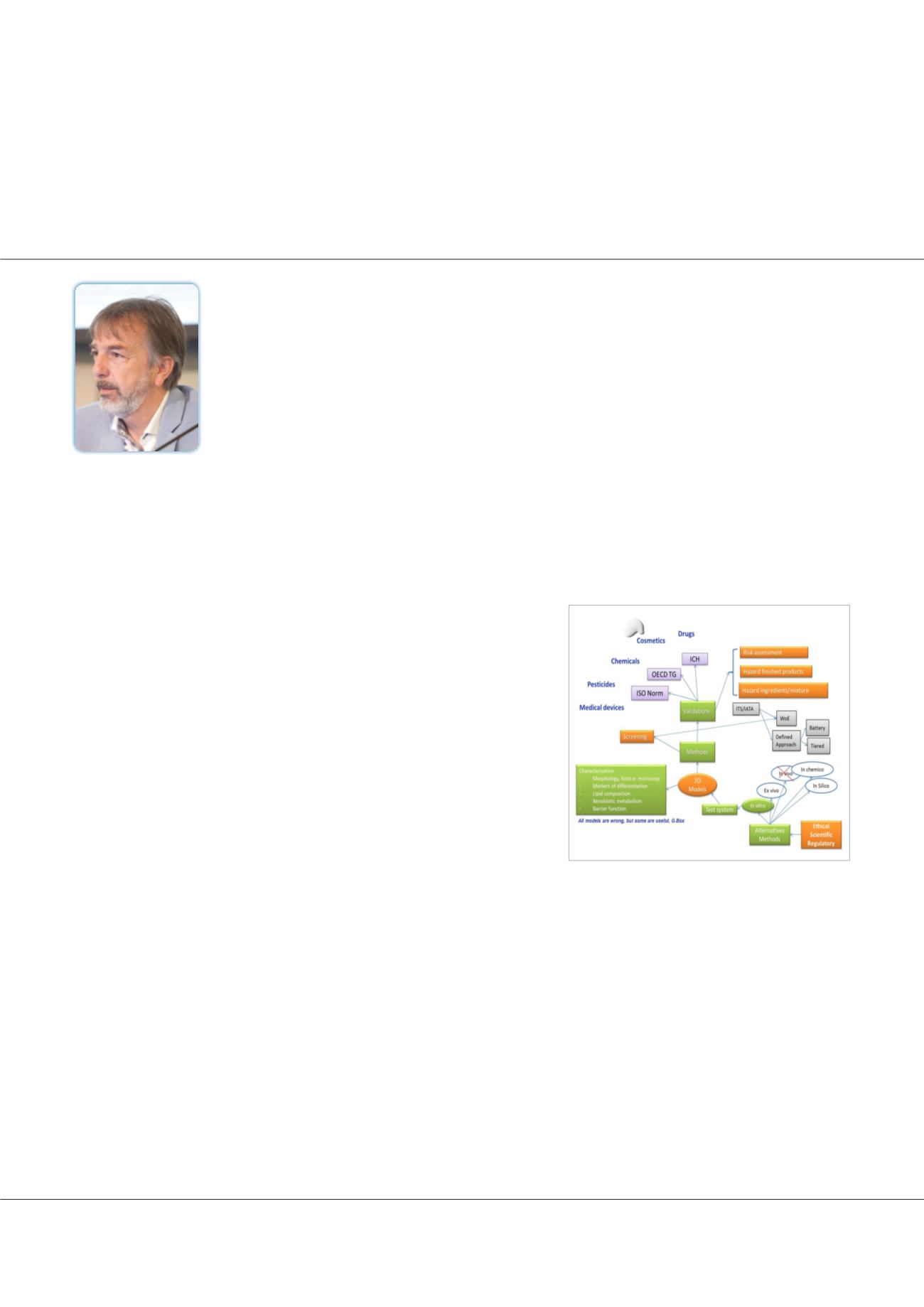

Volume 3, Issue 1 (Suppl)
Toxicol Open Access
ISSN: 2476-2067 TYOA, an open access journal
Toxicology Congress 2017
April 13-15, 2017
Page 56
Notes:
conference
series
.com
April 13-15, 2017 Dubai, UAE
8
th
World Congress on
Toxicology and Pharmacology
Reconstructed skin models and methods for hazard and risk assessment of chemicals and cosmetics
I
n 2003, the 7
th
Amendment to the Cosmetics Directive introduced in Europe the regulatory framework for the phasing out of
animal testing for cosmetics purposes. Since 2013, this testing and marketing ban fully entered in force and is now part of the
European Cosmetic Regulation. Following this European regulation, we observe outside Europe a strong trend for a progressive
shift to non-animal methods for safety of ingredients and cosmetics products. Mechanistic approaches to replace the animal
are based on
in silico
, in chemico and
in vitro
assays that can inform on one or more key events of adverse outcome pathways
(AOP). To be as predictive as possible of human being, such individual
in
vitro
test systems rely more and more on cells of human origin with a 3D
organization which better mimic the vivo situation. To this point of view,
Reconstructed Human Epidermis (RHE) presents several advantages that
make it an alternative method of choice for evaluating some safety endpoints.
To date, several alternative methods in toxicology have been developed based
upon
in vitro
skin: Skin penetration, skin corrosion/irritation, phototoxicity
and genotoxicity. However, an
in vitro
alternative method must be validated
before being recognized by the concerned regulatory bodies. Today, two
alternative methods based on
in vitro
skin models have been validated as
full replacement methods to animal, the OECD-TG 431 for
in vitro
skin
corrosion and the OECD-TG 439 for
in vitro
skin irritation of chemicals.
Moreover, two other methods based on human reconstructed epidermis
and full thickness models have been submitted for validation in the field of
sensitization and genotoxicity.
Biography
Christian Pellevoisin, after a PhD in Neuroscience at the French National Institute of Health and Medical Research, had a temporary teaching position at the
University of Tours, France. He joined L’Oréal in 2000 at the Life Science Research Center where he introduces computer tools for
in vitro
toxicology. He was
In-charge (2004) of scientific communications in the Field of Alternative Methods and Tissue Engineering. In 2011, he joined EPISKIN, a subsidiary of L’Oréal,
dedicated to development and production of reconstructed human epithelia. He is In-charge of EPISKIN Academy, a transversal program to support the use of 3D
models for efficiency and safety assessment and to relay EPISKIN commitments to 3Rs by training scientists, students and future stakeholders to the scientific
and regulatory challenges of alternative to animal testing. He wrote several scientific publications and is Member of ISO technical committee 194 for biological and
clinical evaluation of medical devices.
cpellevoisin@episkin.comChristian Pellevoisin
Episkin Academy, France
Christian Pellevoisin, Toxicol Open Access 2017, 3:1 (Suppl)
http://dx.doi.org/10.4172/2476-2067.C1.001















